Introduction
Product Overview
{{section_header}}{{section.name}}{{/section_header}}
Meet the Sennheiser PXC 450.
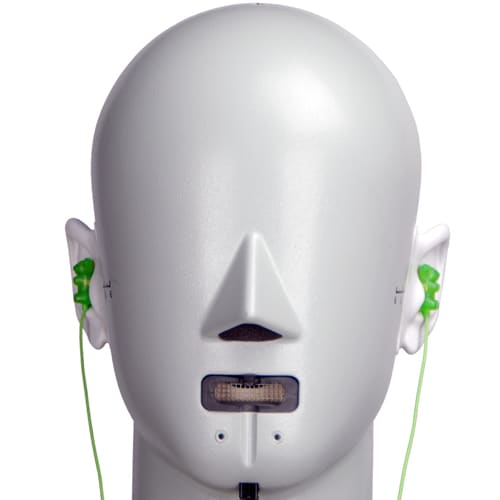
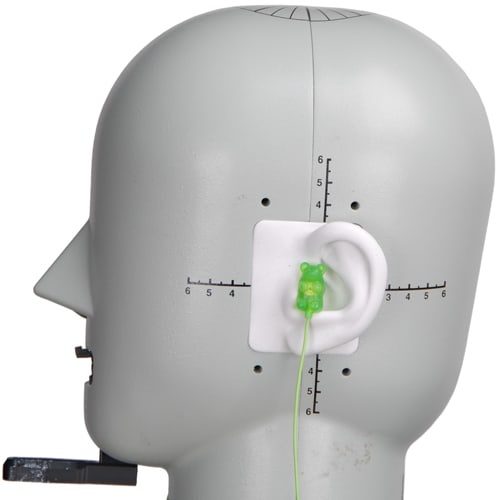
Speakers
{{section_header}}{{section.name}}{{/section_header}}
Here we see the speaker element of the {{product.name}}, guarded by an almost transparently-thin cloth mesh. It's hard to see from the picture, but the active noise-cancelling driver (the tiny goldish one) is situated just forward of the center of the drivers.
Sides
{{section_header}}{{section.name}}{{/section_header}}
Back
{{section_header}}{{section.name}}{{/section_header}}
On the back of the {{product.name}}s you'll see the active noise-cancelling controls for the unit.
Band
{{section_header}}{{section.name}}{{/section_header}}
The band of the {{product.name}}s is soft, and cradles your skull well. No complaints here.
Cable
{{section_header}}{{section.name}}{{/section_header}}
The cable of the {{product.name}}s is your everyday, standard, run-of-the-mill 3.93 feet long. What isn't standard about it, is the fact that you can remove it from the unit if it ever breaks for easy replacement.
A ridiculously thick rubber and plastic-ensconced plug caps off the cable of the {{product.model}}s.
The cord guard looks simple enough, until you realize it comes right out of the ear cups, taking with it a plug and the rest of the cable.
Additional Features
{{section_header}}{{section.name}}{{/section_header}}
The {{product.name}}s come with an airplane adapter for long flights, and a 1/4th inch adapter.
In the Box
{{section_header}}{{section.name}}{{/section_header}}
Opening the {{product.name}}'s box will make you feel like a kid at your winter gift giving holiday of choice, as it comes packaged with your headphones, airplane adapter, 1/4th inch adapter, carrying case, and yes, batteries are included.
Durability
{{section_header}}{{section.name}}{{/section_header}}
The {{product.name}}s are very light for their size, and made of a somewhat cheap-feeling plastic, but don't worry too much: their carrying case is durable, and should the cable break, it is replaceable.
Aesthetics
{{section_header}}{{section.name}}{{/section_header}}
These cans aren't slick or sleek, but they get the job done. Considering how huge they are on your head, it'll be hard not to notice them, but they aren't garishly ugly or anything.
Frequency Response
{{section_header}}{{section.name}}{{/section_header}}
We typically see a huge difference in frequency response with noise-cancelling turned on or off in headphones like the {{product.name}}s, but this difference is very profound. The basic frequency response boosts the lower basses, but seems to flatten out until the 2.5-6kHz range, where it peaks, then falls off to just below our ideal limits for the rest of the range of frequencies.
With the active noise cancelling turned on, the bass frequencies are boosted (albeit more uniformly), but the swings in frequency response become more dramatic, peaking higher and falling lower at about the same places.

Click here for more information on our frequency response test.
Distortion
{{section_header}}{{section.name}}{{/section_header}}
Without the noise cancelling on, the {{product.name}}s don't seem to have too much distortion, but it does show up at about 1% with the circuit on. This is normal, as the way active noise cancelling works is by using destructive interference, so this result is deceptive. Still, it's worthy of note if you're a purist, and demand distortion be at a level that no human could possibly hear.
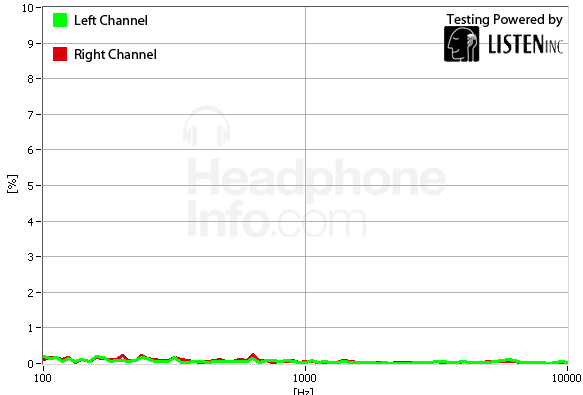
Click here for more information on our frequency response test.
Tracking
{{section_header}}{{section.name}}{{/section_header}}
The {{product.name}}'s tracking response was mostly decent, until the erratic swings in the higher end came into play.
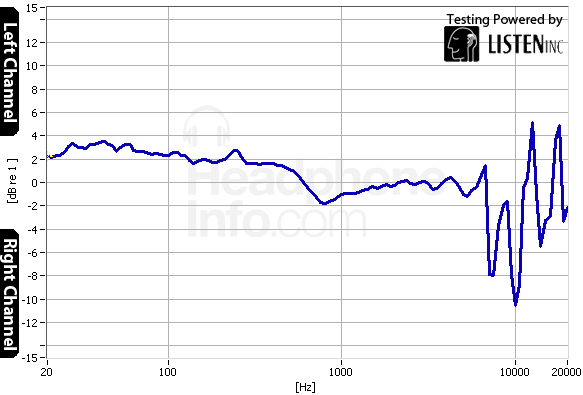
Click here for more information on our frequency response test.
Isolation
{{section_header}}{{section.name}}{{/section_header}}
Overall, the {{product.name}}s isolate a bunch of sound for being over-ears. In addition to showing an aptitude for attenuation even without the active noise cancellation enabled, when the unit actually was turned on, it managed to block out over 20dB of the lower end, which is impressive. These seem to be an ideal choice for long airplane flights, or bus rides with long, loud noise in the low end.

Click here for more information on our isolation test.
Leakage
{{section_header}}{{section.name}}{{/section_header}}
Despite how well these cans block out the outside world, they don't seem to corral their own sound very well.
Click here for more information on our leakage test.
Maximum Usable Volume
{{section_header}}{{section.name}}{{/section_header}}
The {{product.name}}'s maximum usable volume is 107dB, at which point, the level of distortion reaches the magic 3% number that indicates an annoying level. Still, there really is no reason why you should be listening to music at that level, as it is loud enough to damage your hearing. Do yourself a favor and read up on Noise-Induced Hearing Loss.
Click here for more on our maximum usable volume test
Short-Term Use
{{section_header}}{{section.name}}{{/section_header}}
It almost feels as if you're wearing nothing at all. In all seriousness though, because these cans are super-light for their size, and they cup your cranium ever so softly, you'll quickly forget they're there. It's incredible how comfortable these are. Still, be sure to try headphones on before you buy them, as we have different heads than you! What works for us will not necessarily work or feel the same, so give it a shot.

Extended Use
{{section_header}}{{section.name}}{{/section_header}}
Over a period of 6 hours of straight music listening, the comfort level didn't change, so the {{product.model}}s keep the same marks here.
Customizability
{{section_header}}{{section.name}}{{/section_header}}
Outside of being able to replace your cable should it break, there is really no other customization option beyond which brand of battery you use for your active noise cancellation.
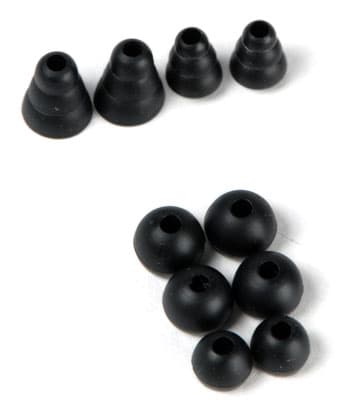
Cable Connectivity
{{section_header}}{{section.name}}{{/section_header}}
As mentioned before, the {{product.name}}s have a standard, milquetoast 1/8th inch plug, with a 1/4th inch adapter and an airplane adapter. Though it won't let you interface with every piece of electronics ever made, you'll certainly be able to duck renting those foul airline headphones for the in-flight movie, or plug into a home entertainment center no sweat.
Portability
{{section_header}}{{section.name}}{{/section_header}}
Despite their huge size, the {{product.name}}s come with a carrying case that is quite bulky. The ear cups move to flatten the unit out, but it really doesn't slim the profile all that much.
Maintenance
{{section_header}}{{section.name}}{{/section_header}}
Outside of being able to replace your cable should it break (which is a huge deal), there really isn't a whole lot you can do to protect your investment. Still, the cable replacement is a very nice feature to have, as it's usually the first thing to break on headphones.
Other Features
{{section_header}}{{section.name}}{{/section_header}}
Battery
Every time you drop in a AAA battery into your {{product.name}}s, you can expect to have it last quit a while, as it was not exhausted in our many hours of testing. For reference, the battery is located at the top of the ear cup, in a small housing where the band meets the ear cup.
Still, the {{product.name}}s need a battery to operate their noise cancelling, which can get to be a hassle carrying around those tiny little metal cylinders everywhere, even more so buying them all the time.
Active Noise Cancellation
The {{product.name}}s have a no-frills active noise cancellation system that does its job and does its job well. Running on only a single AAA battery, the length of listening time isn't half bad.
Design
{{section_header}}{{section.name}}{{/section_header}}
Virtually no aspect of the design of the Beats is any better than the {{product.name}}s, unless style is a very important thing for you. The {{product.name}}s are better constructed, and even more durable. If you want longevity form your cans, give the {{product.model}} a look.
Frequency Response
{{section_header}}{{section.name}}{{/section_header}}
Both headphones have their issues, but we'll give this one to the {{product.name}}s by virtue of the fact that they actually have the ability to turn off their active noise cancelling and allow you to listen to a slightly better frequency response nd lower level of distortion.
Distortion
{{section_header}}{{section.name}}{{/section_header}}
The {{product.name}}s take this, as they not only have lower distortion than the Beats even when actively cancelling sound.
Tracking
{{section_header}}{{section.name}}{{/section_header}}
The {{product.name}}s have their issues, but the Beats are terrible. Their tracking response reads like a seismograph on top of a broken washing machine.
Isolation
{{section_header}}{{section.name}}{{/section_header}}
The Senns take this one too, outperforming the Beats handily in attenuation. The Beats aren't that awful here, but the {{product.name}}s are much better.
Comfort
{{section_header}}{{section.name}}{{/section_header}}
The Sennheisers are far more comfortable for those who have heads on the larger side, but this comparison is more or less subjective, so try each on before you buy. We prefer the Sennheisers, but you might not!
Verdict
{{section_header}}{{section.name}}{{/section_header}}
Even though the {{product.name}}s have a higher MSRP than the Beats, at this point in their life cycle you can find them for cheaper. Outside of style and popularity, there's virtually no reason to buy the Beats over the {{product.name}}s.
Design
{{section_header}}{{section.name}}{{/section_header}}
Aside from the obvious differences in design between on-ears and over-ears, the Sennheiser PXC 250-IIs are a little less durable than the {{product.name}}s, but aren't really all that fragile by any stretch of the imagination. Still, they don't have a replaceable cable, so if you want to hold onto your cans for a long time, you might want to pick up the {{product.name}}s instead. If you're more worried about portability, the PXC 250-IIs win this one hands-down.
Frequency Response
{{section_header}}{{section.name}}{{/section_header}}
Though both sets of cans have their issues, the PXC 250-IIs take this one, as they have the more consistently good frequency response.
Distortion
{{section_header}}{{section.name}}{{/section_header}}
The PXC 250-IIs have a slight distortion problem in the low end, where the {{product.model}} has none.
Tracking
{{section_header}}{{section.name}}{{/section_header}}
Finally, the {{product.name}}s take one, as their tracking was a little more consistent for a wider range of frequencies, major blemish aside.
Isolation
{{section_header}}{{section.name}}{{/section_header}}
The {{product.name}}s take another here, as they block out far more sound than the PXC 250-IIs. Really, the active cancellation on the PXC 250-IIs just fall short in the low end, so you're much better off going with the {{product.model}}s.
Comfort
{{section_header}}{{section.name}}{{/section_header}}
This one's tough. A lot of people prefer on-ears, and their super light presence on their heads. Others like the soft caress and equal weight distribution of the over-ears. The {{product.name}}s are certainly extremely comfortable, but you may prefer something different, so give the PXC 250-IIs a shot before buying.
Verdict
{{section_header}}{{section.name}}{{/section_header}}
This one's tough, but there are clear upsides to both. If you are looking for a flatter frequency response and lower distortion, the PXC 250-IIs are the better bet. If you're looking for better isolation, the {{product.name}}s are a great buy worthy of your attention.
Design
{{section_header}}{{section.name}}{{/section_header}}
We don't need to tell you that in-ears and over-ears are very different in design, but we like to take a look at very different headphones because sometimes you find things you like about a different setup via comparisons. With in-ears, you typically see easier breakage, but like the {{product.name}}s, the MDR-EX600s have the option of re-cabling in the event of something going awry. Both are relatively durable and both won't win any beauty pageants.
Frequency Response
{{section_header}}{{section.name}}{{/section_header}}
In our tests, the MDR-EX600 scored better in terms of frequency response because it stayed within our ideal limits better than the {{product.name}}s. That's not to say that they didn't have their own underemphasis problems (seen on the chart), but they didn't have as many as the {{product.model}}s.
Distortion
{{section_header}}{{section.name}}{{/section_header}}
Neither set of cans had distortion issues really worth mentioning, active noise cancellation on the {{product.name}}s aside.
Tracking
{{section_header}}{{section.name}}{{/section_header}}
The MDR-EX600s had a much more even tracking response overall.
Isolation
{{section_header}}{{section.name}}{{/section_header}}
Looking at the graph below you can see that with the active cancellation enabled, the {{product.name}}s do a much better job at blocking out a significantly higher amount of noise than the MDR-EX600s.
Comfort
{{section_header}}{{section.name}}{{/section_header}}
Here's an area that's a little unfair by design. As in-ear headphones are essentially small bits of plastic and metal jammed into an orifice that no item was meant to go, the comfort level of in-ears will probably always be far lower than that of an over-ear headphone or on-ear set of cans. The {{product.name}}s' extreme comfort factor notwithstanding, the MDR-EX600s didn't really have a chance here.
Verdict
{{section_header}}{{section.name}}{{/section_header}}
As we like to say a lot: this one's up to you. If you want better audio performance, the Sony MDR-EX600s are the better bet, but not by much. If noise attenuation is more important to you, or if you're looking for a set of cans for a long plane trip, we'd say stick with the {{product.name}}s, as they were tailor-made for that purpose.
Design
{{section_header}}{{section.name}}{{/section_header}}
Both sets of over-ears are closed-backed and powerful, but the ATH-M50s lack active noise cancellation. Both are durable, and both aren't the sleekest things you'll ever put on your head.
Frequency Response
{{section_header}}{{section.name}}{{/section_header}}
Whereas the {{product.name}}s' frequency response more resembles a seismograph than a flat line, the ATH-M50s actually do a better job of staying within our ideal limits here.
Distortion
{{section_header}}{{section.name}}{{/section_header}}
Here too, the ATH-M50s have a lower level of distortion, even though at these levels, it's splitting hairs that you will never even hear.
Tracking
{{section_header}}{{section.name}}{{/section_header}}
Neither set of cans impress in this area, as both responses are erratic. Still, the ATH-M50s take this one, as their swings in channel preference aren't very audible, if at all.
Isolation
{{section_header}}{{section.name}}{{/section_header}}
The {{product.name}}s take a win here, as they attenuate much more sound than the ATH-M50s with no active cancelling.
Comfort
{{section_header}}{{section.name}}{{/section_header}}
Having tested both of these in relatively short order, we'll give the edge to the {{product.name}}s, but both sets of cans are ridiculously comfortable.
Verdict
{{section_header}}{{section.name}}{{/section_header}}
As always, this one's up to you, but if you want audio performance with a lower price tag go with the ATH-M50s and you won't be disappointed. If, however, you would like a good level of active noise attenuation and durability in your cans, we'd suggest going after a pair of {{product.name}}s.
Conclusion
{{section_header}}{{section.name}}{{/section_header}}
The {{product.name}}s are an all-around decent set of active noise cancelers that don't sacrifice much performance for decent isolation. In addition to their extremely comfortable wear, they seem to do well in many of our tests. That isn't to say that they're perfect, as they do have some issues in their frequency responses, but overall, not a bad product for the price.
Meet the tester
A seasoned writer and professional photographer, Chris reviews cameras, headphones, smartphones, laptops, and lenses. Educated in Political Science and Linguistics, Chris can often be found building a robot army, snowboarding, or getting ink.
Checking our work.
Our team is here for one purpose: to help you buy the best stuff and love what you own. Our writers, editors, and lab technicians obsess over the products we cover to make sure you're confident and satisfied. Have a different opinion about something we recommend? Email us and we'll compare notes.
Shoot us an email


